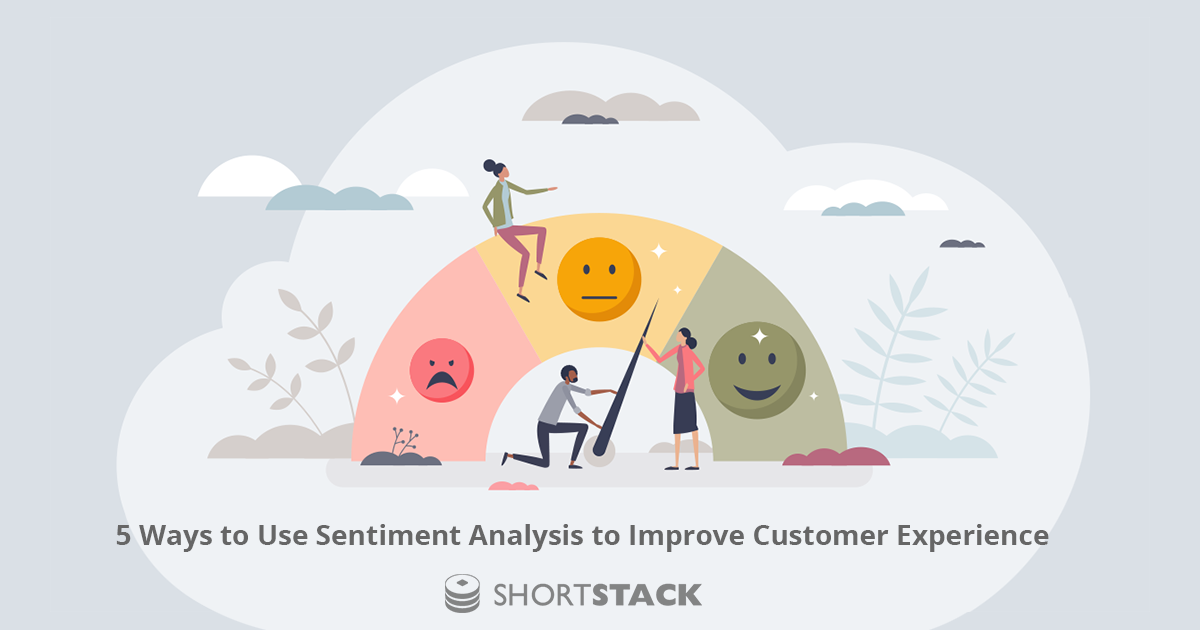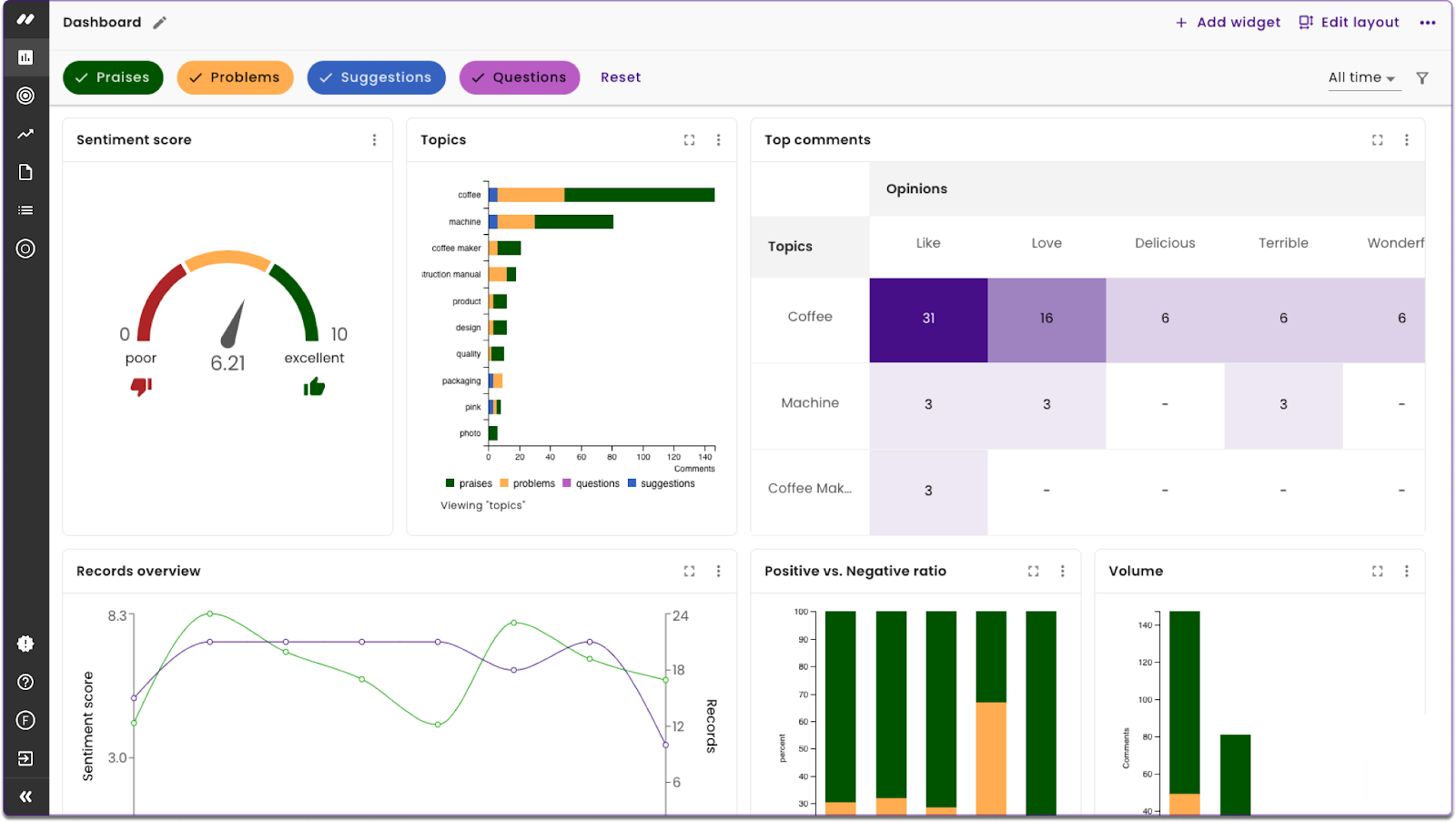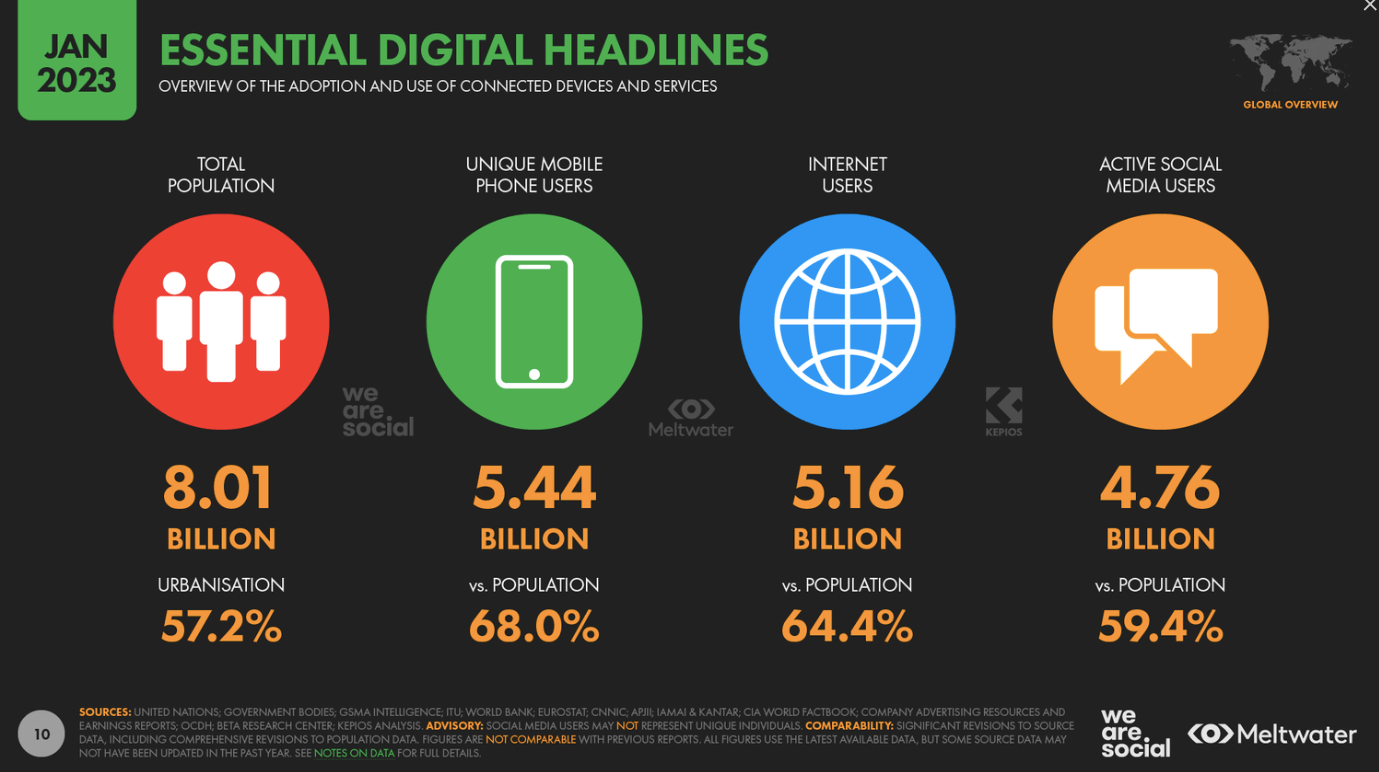5 Ways to Use Sentiment Analysis to Improve Customer Experience

This content discusses sentiment analysis and how businesses can use it to improve customer experiences and increase sales.
You may have heard that opinions matter in the world of online sales. But what does that really mean? And more importantly, how can you take advantage of your audience’s mindset to increase sales and encourage them to make repeat purchases?
This post will discuss sentiment analysis. As businesses seek to provide better customer experiences, they turn to this tool to gain insights into consumer opinions and preferences.
The sentiment is the subjective view or feeling about a particular subject. It’s an emotion experienced after interacting with the brand or its products and services. You can measure it based on customer reviews or messages sent to you. And it’s vital to analyze it to make better decisions, improve the business, and tailor products to specific needs.
What Is Sentiment Analysis: Definition, Benefits, and Challenges
Sentiment analysis is a potent tool, helping you improve various business aspects, from the website/app to customer service. It can become part of the eCommerce homepage UX best practices thanks to the valuable insights into client behavior on various website pages. But what is sentiment analysis, and will it suit your business? Let’s introduce the term.
Sentiment analysis (also known as emotional artificial intelligence or opinion mining) uses natural language processing to ascertain if the data it receives reflects a positive, negative, or neutral tone. It’s an automated process of learning and evaluating how consumers feel about your service, brand, or product. It’s handy as it relies on artificial intelligence (AI) and tools, and online data can be impossible to process manually.
What Are the Benefits of Sentiment Analysis?
Sentiment analysis covers all forms of client communication, including feedback, emails, comments, reviews, posts, phone calls, and chatbots. As with most key performance indicators (KPIs) and metrics, sentiment analysis illustrates your strengths and weaknesses, such as:
- whether visitors can navigate the website or app;
- how fast the customer care department works;
- whether products live up to consumer expectations, and so on.
As a result, you can understand what to leave as it is, improve, or ditch. Here are some of the top benefits of conducting sentiment analysis:
- identifying the happiest buyers to offer more goods and services to them;
- tracking agent performance;
- monitoring multiple shoppers at once;
- discovering what words trigger positive or negative emotions;
- recognizing shifts in clients’ opinions;
- monitoring overall customer satisfaction;
- cutting down on customer churn;
- starting a conversation quickly;
- presenting real-time mood changes;
- providing insights into the best-suited behavior.
Challenges to Expect When Conducting Sentiment Analysis
Analyzing human speech is tricky, so you need to overcome several challenges while employing sentiment analysis. It’s hard to preset all scenarios. People may use slang, synonyms, sarcasm, or mispronounce/misspell words. One word may have different meanings in various contexts, leading to ambiguity.
As it’s possible to train AI to understand long-form and edited texts, errors, metaphors, or emojis are another story. Is the word “bad” actually negative? What about this word in the context, such as “I want it so bad”? That’s why sentiment analysis software requires regular improvements and training to compete with humans in understanding the nuances of different languages.
5 Ways to Enhance Customer Experience Using Sentiment Analysis
Listening is the best and most accurate way to learn what makes a client feel positively or negatively. What do people have to say? To answer this question, you need a text-mining tool. With its help, you can provide a faultless customer experience by converting people’s voices into valuable data. The most popular ones include Hubspot’s Service Hub, Hootsuite Insights, MonkeyLearn, Awario, Lexalytics, and others.
But having data is only the first step. You should know how to apply knowledge and act. Let’s examine how sentiment analysis benefits a company’s efforts to enhance the customer experience.
1. Identify Trends and Patterns
The ability to spot trends and patterns makes sentiment analysis one of the most effective tools available to businesses. Sentiment analysis technologies can aid companies in locating recurring topics and problems that clients are discussing by evaluating vast amounts of data. Knowing that will let you focus on the areas that matter most to your clients. Thus, you can serve them more effectively.
A case in point is Keatext, a platform for text and sentiment analysis. The tool provides a sentiment score widget to view the overall data sentiment. You can filter the results to analyze them from any angle for a specific audience segment, issue, etc. Also, you can track changes in the score over time to identify trends and see how they correspond with your business choices.

Image credit: Keatext
Pro tip: One of the ways to understand consumer feelings is by introducing surveys. These can be exit-intent or churn surveys to discover reasons for cart abandonment or subscription cancellation. Ask open-ended questions for more detailed responses rather than simple ‘yes’ or ‘no’.
2. Monitor Brand Reputation on Social Media
Over half of the world’s population uses social media (4.76 billion people out of 8.01 total).

Image credit: SmartInsights
This venue is a perfect place to sustain communication with your target audience. Have you ever tried to monitor its activities there?
Both direct and passive mentions on social media are valuable sources of insightful client feedback. However, situations and tags on social media can quickly become out of hand. Thus, responding to customer problems on social media promptly, directly, and effectively is critical to prevent unpleasant situations or turn them into positive ones.
One of the best options here is an AI-based strategy like sentiment analysis. People may ask questions, share experiences, and opinions, and look for support on social media. And to measure their sentiment, you need a sophisticated and user-friendly social media monitoring technology.
It can be Talkwalker, Determ, Brand24, etc. Real-time analysis of consumer attitudes keeps you one step ahead of a possible disaster and enables you to take action even before a bad customer experience becomes viral.
3. Personalize Customer Interactions
By decoding the clients’ feelings, you can personalize communication to improve the customer experience. Sentiment analysis tools leverage historical data to define buyers’ pain points. In the future, it will let you spot similar situations and reach out to prospects proactively to offer your help.

Let’s say you run an online store that sells a wide range of products, including clothing, electronics, and home goods. You have a large customer base and want to provide a personalized experience to each person.
Suppose someone leaves a negative review of a product they purchased, saying it was not as described and did not meet their expectations. Using sentiment analysis, you can quickly identify the negative coloring of the review and start a conversation with the person to propose a solution, such as a refund or exchange. It shows everyone that you pay attention to their feedback and care about their experience, which can help build a stronger relationship with them.
On the other hand, if a buyer leaves a glowing review of a pair of shoes they purchased, you can recommend similar shoes or accessories they may like based on their sentiment and past purchase history.
Pro tip: Utilize chatbots to connect with consumers and offer relevant goods and services. Chatbots can use sentiment analysis to track customer emotions over time, allowing them to understand each shopper’s preferences and needs better.
A case in point is Babylon Health, a health service provider. Its AI-powered bot technology with Symptom Checker performs the following tasks:
- analyzing symptoms;
- finding potential causes;
- scheduling appointments with a doctor.

Image credit: Babylon Health
4. Improve Product Development
Product teams can use sentiment analysis to make their products better. You can gain insights from unstructured data to uncover differences between your offering and the competition. Sentiment analysis also helps you recognize features that consumers desire.
Let’s assume a digital banking provider researches its direct competitors. And their clients praise their user-friendly mobile app or website UI/UX. Companies may rely on this data to invest in creating their app and improving the website layout.
The same applies to detecting defects in the current product. As an illustration, suppose your sentiment analysis reveals complaints about the checkout process. You can quickly determine the reasons for poor reviews at the checkout and assign this case to the appropriate team to address the problem. TechSmith, a SaaS company, used Hotjar tools and survey sentiment analysis to collect client feedback and enhance its website and product.
5. Reduce Backlog and Resolve Cases More Quickly
Another problem associated with customer experience is case backlog. It happens when the issue takes too much to resolve, remaining in the list of pending tasks. People prioritize speed in receiving help: 82% of consumers want responses in 10 minutes or less.
That’s where sentiment analysis can also help. Sentiment analysis tools can identify the subject of each support ticket for you to transfer the task to the needed specialists and shorten the resolution time.
Final Words
Online reviews have grown to be a crucial component of many shoppers’ decision-making processes. When looking for a new laptop, cellphone, or even a pair of jeans, people often consult reviews from other buyers who have had experience with the product. The same applies to social media, impacting our purchase decisions. If someone we trust likes and promotes the business, shoppers are likelier to want it too.
Your task is to analyze customer reviews and sentiments to understand their preferences and trends. Survey your most engaged and committed audience. How do people feel about your company?
Introduce polls on the website, newsletters, or Instagram stories. The options to measure customer satisfaction have no ceiling.
However difficult it may seem, the right tools can streamline the process. Leverage them to strengthen your client relationships and transform them into brand evangelists.





